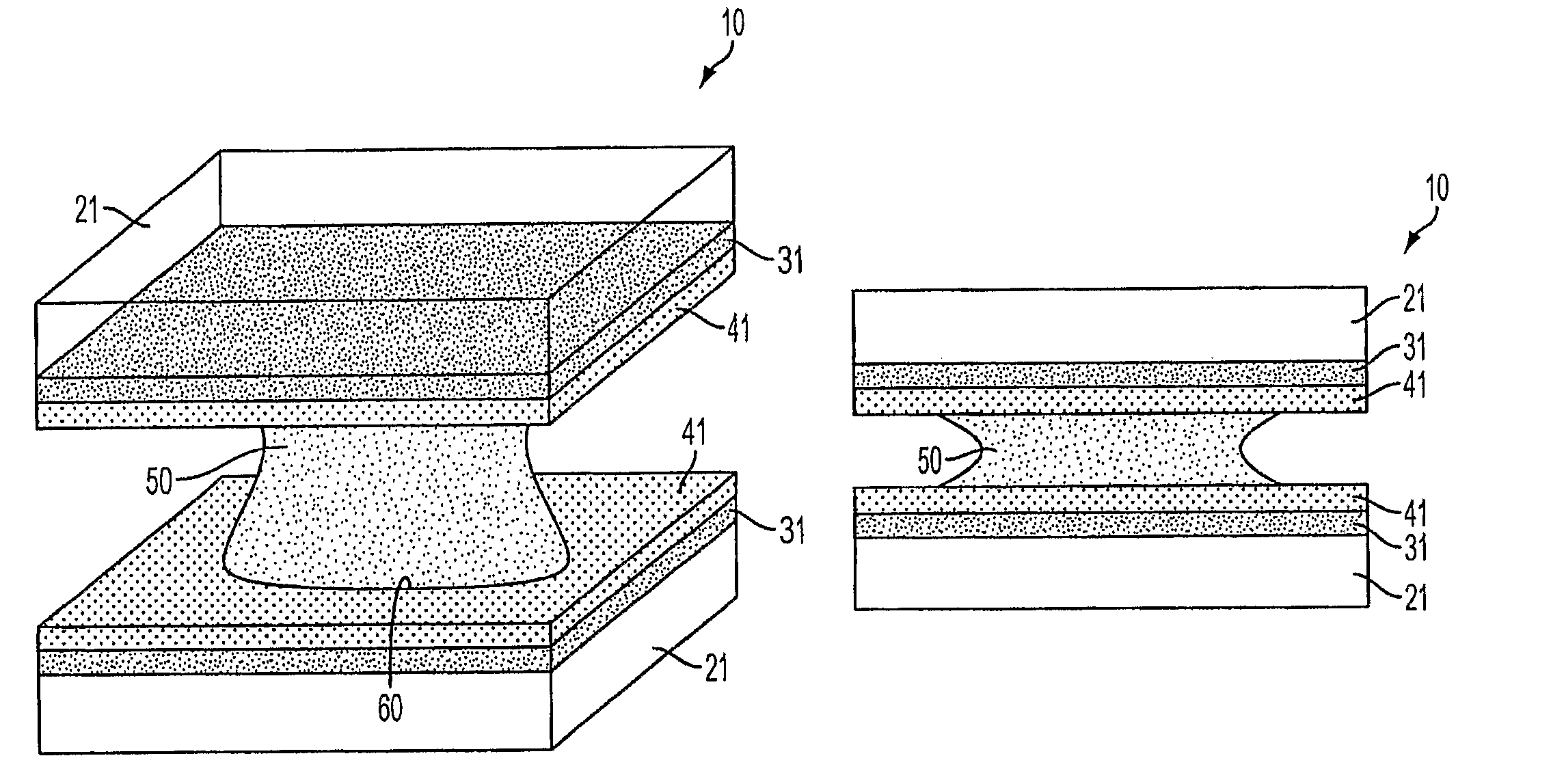Capillary force actuator device and related method of applications
a technology of capillary force and actuator, applied in the field of capillary force actuator, can solve the problems of device becoming prone to side instability, device suffering from limitations of its own, and the inability to achieve large forces and large strokes at the same time, so as to achieve the effect of dramatic increase in the force creation of a traditional electrostatic actuator
- Summary
- Abstract
- Description
- Claims
- Application Information
AI Technical Summary
Benefits of technology
Problems solved by technology
Method used
Image
Examples
Embodiment Construction
[0033]A Capillary Force Actuator (CFA) consists of at least two surfaces with a conducting liquid bridge spanning the gap between them, this bridge surrounded by an insulating non-working fluid, either liquid or gas. At least one of these surfaces contains one or more electrodes covered with a thin layer of solid dielectric material. The same or another surface contains another electrode, which may or may not be covered with a dielectric material. When an electrical potential is applied across the electrodes, the phenomenon of electrowetting occurs, especially on the dielectric-covered surface, where the contact angle of the liquid on the surface is reduced. The decrease in contact angle on the surfaces results in a change in the shape of the liquid bridge and hence in its capillary pressure. A net force is then generated by both the capillary pressure acting on the surfaces and by the surface tension forces acting at the contact line, the former typically being the predominant cont...
PUM
 Login to View More
Login to View More Abstract
Description
Claims
Application Information
 Login to View More
Login to View More - R&D
- Intellectual Property
- Life Sciences
- Materials
- Tech Scout
- Unparalleled Data Quality
- Higher Quality Content
- 60% Fewer Hallucinations
Browse by: Latest US Patents, China's latest patents, Technical Efficacy Thesaurus, Application Domain, Technology Topic, Popular Technical Reports.
© 2025 PatSnap. All rights reserved.Legal|Privacy policy|Modern Slavery Act Transparency Statement|Sitemap|About US| Contact US: help@patsnap.com



